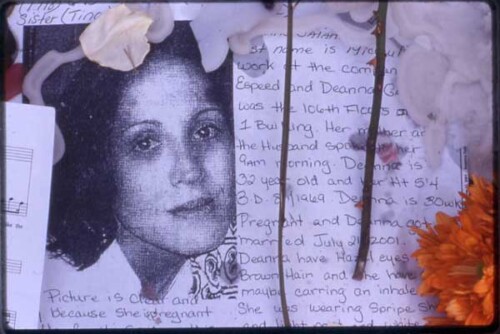Rather than learning to respect the very different perspectives and experiences that each transgender subgroup brings to the table, the transgender community has instead become a sort of gender free-for-all, where identities are regularly co-opted by others within the community. These days, many transsexuals assume that they have the right to appropriate the language of, or speak on behalf of, intersex people; similarly, many cissexual genderqueers feel they have the right to do the same for transsexuals. This needlessly erases each group’s unique issues, obstacles, and perspectives.
— Julia Serano1Cultural studies thus believes that its practice does matter, that its own intellectual work is supposed to—can—make a difference…. Cultural studies is never merely a theoretical practice, even when that practice incorporates notions of politics, power, and context into its analysis…. In a period of waning enthusiasm for “pure” and implacably ahistorical theory, cultural studies demonstrates the social difference theory can make.
— Lawrence Grossberg, Cary Nelson, and Paula Treichler2
I want to come clean from the outset—my field is neither Religious Studies nor Queer Studies. I am a scholar of rabbinics, which, although it concerns itself with deeply religious ancient texts, rarely situates itself within the greater field of “Religious Studies.” I am of European descent, queer, a lesbian, and a Jew. And I am, and have always been, an activist, which again, situates me outside a field (in this case, my field), for although much is now being written on issues of gender, class and race, “activist scholarship” is generally looked down upon in the field of rabbinics.
My positions as “insider/outsider,” my contact with literature from the fields of Queer Studies and Religious Studies, and my desire for my scholarship to “do something,” have all raised multiple questions for my work, which finds itself at this intersection of queer studies and religion. I speak here as someone for whom what I write, for whom I write, and why I write are inseparable. And I speak here to those at this intersection who, like me, are invested in the project of Queer Studies and religion beyond the academy. Here, I wish to (humbly) examine just one of the questions that emerges of these considerations: What is the relationship between queer religious scholarship (my rabbinics scholarship included), and queer and/or religious people? Our scholarship is often unabashedly allied with “queer politics” (by which I mean an investment in the political/social outcome and greater meaning of what we write) and sometimes inextricably bound to our own religious (or anti-religious) beliefs, struggles and/or questions.3 How might it then serve to benefit, enrich and excite queer movements and religious communities? At the same time, how do we keep our work from co-opting, exploiting or excluding those very people (or others who reside outside of the bounds of those movements)?
What I offer here are three examples of how these questions play out in my own work, and thoughts about how they might play out in the field at large. I first examine the issue of when the texts don’t say what we wish they would. Then I examine what happens when those we are writing about do not have consensus on how they wish to be discussed, and we are confronted with how to be an ally while making our choices about language. Finally, I reflect on our audience—how we want to write for that audience, and what (or whom) we forgo and/or gain in the process of making those decisions. Of course, these are only examples of a vast range of issues that arise when we wish to make our scholarship matter, but they are a place to start.
Excitations: Texts that Won’t Behave
My writing is primarily concerned with the subject of intersex in Jewish legal texts (rabbinic literature) of (approximately) the first to sixth centuries C.E., in which there is a fair amount of deliberation about intersex bodies. The discussion revolves around how to “classify” those bodies in a religious system that is entirely dependent upon a binary sex/gender system for almost every aspect of daily life. In these texts, there is rarely a differentiation between biological sex and gender assignment. The assumption is that being born with male genitalia means following the ritual laws assigned to men, and being born with female genitalia means following laws assigned to women. In the legal material, nowhere have I found that the rabbis prescribe or assume that a male or female might follow laws that do not conform to their gender assignment. Thus, when the rabbis discuss intersex bodies, bodies that do not conform to the binary, they are of necessity discussing gender assignment, insofar as they are deciding which of the gender segregated rules the person with an intersex body must follow at any given moment. As Charlotte Fonrobert puts it, “sex is variable, gender is not.”4 This is where the rabbinic conundrum occurs.
In exploring the subject of intersex in Rabbinic literature, some have chosen to focus on the rabbis’ obsession with categorization as a thought experiment, rather than on the possible impact of the rabbinic discourse on actual intersex bodies.5 One of the elements that queer theory brings to the table is the real people behind these supposedly theoretical texts. And this is where things begin to get fuzzier, because I want my work to serve real people. I want my work to excite and inspire them. I want to find places in the ancient texts in which they can see themselves reflected, and to find alternatives to the way in which the discourses of today are conducted. And I believe that it is our responsibility as scholars at this intersection to keep in mind the harm that has already been caused to the queer community, and to intersex individuals (or individuals with DSD), often in the name of religion itself, and not to repeat that harm in our research. At the same time, it is essential to our scholarship that we tell the truth about what these texts say (to whatever extent that is possible), whether or not it is what we wish them to say.
Some have adopted these texts or their language in ways that are empowering to the queer community, bringing to light a system that seems more flexible regarding gender, and thus allowing Jewish queer folk to see themselves reflected in ancient religious texts for the first time. There are web pages dedicated to the subject,6 organizations that use the language of the Talmud, a traditional group that prepares the dead for burial that includes this language on its website,7 and even a series of media projects bringing “lesbian, gay, bi, trans, queer, questioning, tumtum and androgynous Jewish perspectives to film, television and print media.”8 Biologist Anne Fausto Sterling, in her groundbreaking book Sexing the Body, writes: “Jewish religious texts such as the … Tosefta list extensive regulations for people of mixed sex…. Judaic law provided a means for integrating hermaphrodites [sic] into mainstream culture.”9
But this is not the whole story. From the looks of all of these sources, one might think that the rabbinic view of the intersex body and the fluidity of sex/gender is far more advanced than what we find in our own western cultural milieu. And in certain ways, this is indeed true. For example, whereas our culture “disappears” such bodies by cutting them to fit into the binary system, the culture of the rabbis attempted no such tactics. So too, rather than being repressed, discussion of people who do not fit into that norm was fairly natural.
On the other hand, what of the fact that in many cases, the intersex body lands at the bottom of the gender hierarchy? What of the fact, that although the rabbis do speak about intersex bodies, they are far from believing that these “non-conforming” bodies should be allowed “non-conforming” gender roles? Queer Jews look to these texts to find themselves. And yet in our scholarship we must be equally attentive to the fact that the rabbis’ approach to the topic of intersex is not ours, and bears little resemblance to the ways in which we understand queer or intersex or DSD at this moment in history.
When we try to see queer in an ancient religious tradition, do we not sometimes glamourize an equally oppressive and patriarchal system, in the service of empowerment? If we are to be politically relevant scholars, allies and truth-tellers, imaginative and critical, under what circumstances do we “queer” the texts, and under what circumstances do we “query” them?
- Julia Serano, Whipping Girl: A Transsexual Woman on Sexism and the Scapegoating of Femininity (Berkeley: Seal Press, 2007), 354. [↩]
- Lawrence Grossberg, Cary Nelson, and Paula Treichler, Cultural Studies (New York: Routledge, 1992), 6. [↩]
- See, for example, Ayesha Chaudhry’s description of Yasir Qadhi, Assistant Professor at Rhodes College, in “Sexual Violence and Sacred Texts,” Feminist Studies in Religion Press, forthcoming. [↩]
- Charlotte Elisheva Fonrobert, “Regulating the human body: rabbinic legal discourse and the making of Jewish gender,” in The Cambridge Companion to the Talmud and Rabbinic Literature, ed. Charlotte Fonrobert and Martin Jaffee (Cambridge; New York: Cambridge University Press. 2007), 270-294. [↩]
- See, for example, Sacha Stern, Jewish Identity in Early Rabbinic Writings, Arbeiten zur Geschichte des antiken Judentums und des Urchristentums, (New York: Brill, 1994), 101-102. [↩]
- “TransTorah”. [↩]
- “Training for your Chevra Kadisha”. [↩]
- “Fein Mentsch—Midrash Through a Contemporary Lens”. [↩]
- Anne Fausto-Sterling, Sexing the Body: Gender Politics and the Construction of Sexuality (New York: Basic Books, 2000), 33. [↩]




